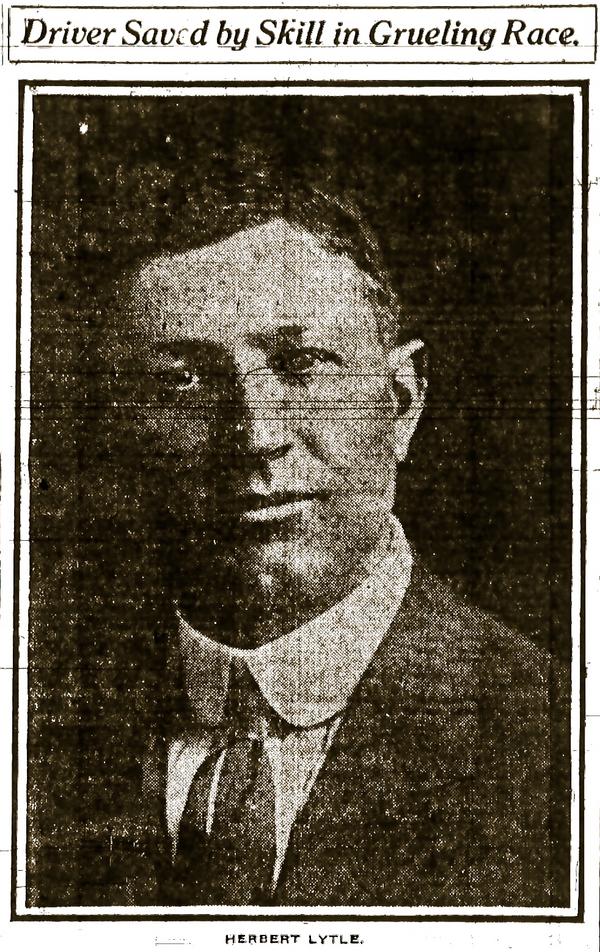- 1890s Cars
- Barney Oldfield Images
- Oldfield - Petersen
- Beer
- Early Auto Industry
- Uniontown - Marci McGuinness
- General Period Clip Art
- Early Race Related Clip Art
- Advertising and Editorial Cartoons
- Early Indianapolis
- IMS Construction
- Indianapolis Speedway
- First IMS Auto Races
- Failed 1909 Air Show
- 1909 IMS Balloon Races
- 1909 IMS Motorcycle Meet
- 1910 Indianapolis Auto Show
- 1913 Indianapolis 500
- 1919 Indianapolis 500
- Joe Dawson
- WWI "500" Winner Draft Cards
- Frank Di Buglione (off the wall art, LLC)
- Gilbert Art
- Carl Graham Fisher
- IMS Hall of Fame Museum
- Alco at 100th Anniversary
- Frederic Matile - Morris Park
- Miami-Fulford Speedway
- Paul Sheedy Collection
- Early Wyoming Racing - 1909 - 1919
- Personalities
- Early Racing Images
- Glidden Tour
- 1909 Cobe Trophy
- Fairmount Park & Belmont Estates
- Early Santa Monica
- Don Radbruch Collection
- Jeroen de Boer Collection 1910
- Jeroen de Boer Collection 1912
- Jeroen de Boer Collection 1913
- Jeroen de Boer Collection 1914
- Georges Boillot
- Story's Indianapolis 500 Cars
- Story's Sports Cars
- Story's Grand Prix Cars
- Old School
- Story's Brickyard Sketchbook
Lytle in Wheeler-Schebler Trophy Race
Photo Gallery Categories
Search
Featured Article
Image of The Week

This image of veteran driver Herb Lytle first appeared in the August 22, 1909 Indianapolis Star. It was part of the coverage of the tragic first auto racing event at the Indianapolis Motor Speedway. These races were controversial due to the devestating fatal accidents on the first and third days of the meet. In all, five men were killed:
- William Bourque, driver.
- Harry Holcomb, riding mechanic
- Claude Kellum, riding mechanic
- James West, spectator
- Homer Jolliff, spectator
The single most devestating race was the final event of the entire three days, the Wheeler-Schebler Trophy which was scheduled for 300 miles but was called off at 235 miles with Jackson Automobile Company driver Leigh Lynch in the lead. The big accident of the day occurred when the National Motor Vehicle Company racer driven by Charlie Merz blew a tire, crashed through the fencing lining the course and catapulted into the crowd. Riding Mechanic Kellum lost his life as did spectators West and Jolliff.
Early in the race Lytle and his riding mechanic Joe Bitts provided a scare when the former lost control of his Apperson Jackrabbitt racer in the first turn. They appeared to be headed up the embankment to fencing and then spun downward to the infield to come to an abrupt stop by hitting a dirt embankment. Bitts was thrown from the vehicle, tumbling several feet before springing to his feet to the cheers of the fans in the grandstand. The men used shovels to dig out of the dirt, repaired the car and re-entered the competition some 50 laps down.
Called the "dean" of auto racers in the press, Herb Lytle was probably the most experienced driver compteting at the Speedway in 1909 as well as nearly two years later at the first Indianapolis 500. No other driver had been racing cars since the 1890's, as Lytle did. Lytle was also the only driver who competed in the first Vanderbilt Cup in 1904 who also raced in the Indianapolis 500.
Unfortunately, Lytle's participation in the first Indianapolis 500 ended in the race's spectacular accident, through no fault of his own. The massive home stretch accident was triggered by Joe Jagersberger and involved Harry Knight, Lytle and Fiat driver Caleb Bragg. Lytle, who drove an Apperson racer, was servicing his car in the pits when he was collected in the melee. The Apperson automobile company was based in Kokomo, Indiana.
The first Indianapolis 500 proved to be Lytle's last, although he did compete at the Speedway not only in its inaugural auto race meet of August 1909 but also the first full race meet (aside from the December 1909 speed trials) after the track was paved with bricks, which was organized in May 1910. Lytle's efforts in these events were without distinction except for the fact that he was the only driver seriously injured in the May races, suffering a broken left leg.
Another important item on Lytle's resume was his run in the 1905 James Gordon Bennett Jr. Cup race in France. Lytle drove several races for Pope-Toledo, including this Bennett Cup, the most important race in the world in 1905. Lytle also drove in the 1908 Briarcliff Trophy and you can read about his impressions of that race elsewhere on First Super Speedway. Lytle contracted Typhoid Fever in late 1908 and narrowly survived an illness that raged for six months.
| Attachment | Size |
|---|---|
| Lytle09.jpg | 995.01 KB |
